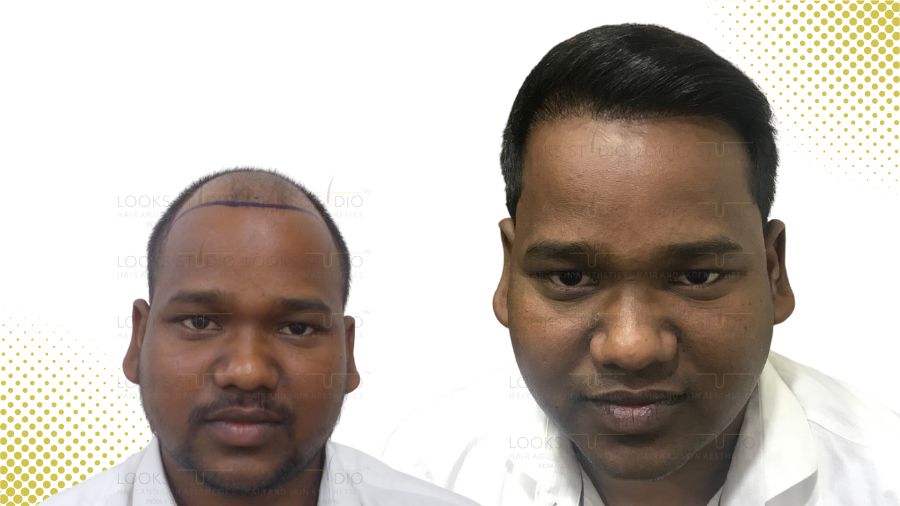Understanding the Results of Hair Transplant – Essential for Satisfaction:
Hair loss can be a frustrating experience, and a hair transplant is an important decision for those seeking a solution. Setting realistic expectations and comprehending the procedure’s outcomes are crucial to achieving satisfaction. This article aims to address common queries and worries regarding hair transplant results.
The Journey of Hair Transplant Results
A. Initial Healing Phase:
After a hair transplant procedure, patients may go through an initial healing phase where they may experience scalp sensitivity, redness, and mild swelling. It’s not unusual to see small scabs forming around the newly transplanted hair follicles. To ensure proper healing, it’s crucial for patients to carefully follow the post-operative care instructions provided by their surgeon.
B. Early Growth Stage:
During the early growth stage, which lasts a few months after the procedure, patients can expect to see shedding of the transplanted hairs, which is a natural part of the process. Gradually, new hair growth will emerge. Around the third month, some patients may notice up to 20-30% of the transplanted hairs growing in. It’s important to be patient during this phase since the final results take time to become noticeable.
C. Progressive Improvement:
Over time, hair growth will become more noticeable and look more natural following a hair transplant. The transplanted hair will continue to grow, and patients may notice an increase in density each month. By the sixth month, approximately 50-60% of the final results can be expected, and by the ninth month, approximately 80% of the hair will have grown.
D. Full Growth and Final Results:
The complete hair growth and final results usually become noticeable after 12 to 18 months. During this time, patients can fully assess the success of their hair transplant. The density and appearance of the transplanted hair will be in line with the patient’s expectations.
Factors Affecting Hair Transplant Results
A. Patient-Specific Factors:
Numerous individual factors have an impact on the outcome of a hair transplant. Age is a key factor, with younger patients often achieving better results due to higher-quality hair and a stronger donor area. The overall health of the patient is also essential, as it influences the body’s ability to heal and support hair growth. Genetics is another significant factor, as the transplanted hair will retain the characteristics of the donor area. Pre-existing conditions, such as alopecia areata, may also have an impact on the overall results.
B. Surgical Techniques and Expertise:
When it comes to hair transplant surgery, the surgeon’s expertise and techniques used play a crucial role in achieving natural-looking results. Factors like hairline design3, hair angle, and proper graft placement are carefully considered by skilled surgeons. Different techniques, such as Follicular Unit Transplantation (FUT)1 and Follicular Unit Extraction (FUE)2, offer unique effects on the outcome. It’s important for patients to have a consultation with their surgeon to determine the most suitable approach for their individual needs.
C. Post-operative Care and Maintenance:
After undergoing a hair transplant surgery, it is important to take proper care of the transplanted area to achieve the best results. It is recommended that patients closely follow their surgeon’s instructions, particularly on how to wash and protect the area. During the healing phase, it is crucial to avoid overexposure to sunlight, smoking, and alcohol consumption. In the long run, proper maintenance may involve taking prescribed medications such as minoxidil4 to promote hair growth and prevent further hair loss.
Real Patient Testimonials and Before/After Pictures:
Real patient testimonials and before/after pictures can be presented to showcase the success of hair transplants. These testimonials highlight the positive transformation and satisfaction of previous patients.
Before/After Pictures5






Testimonials:






Setting Realistic Expectations
A. Managing Expectations:
It’s important to keep in mind that each person’s hair transplant results are different. To have a positive experience, it’s crucial to manage expectations. Let potential candidates know that not all patients achieve the same density or coverage. Encourage them to be patient and understand that it takes time for the results to fully show.
B. Addressing Potential Challenges and Complications:
It’s important to acknowledge and discuss any potential challenges and complications that may arise during the hair transplant process. Although uncommon, problems such as infections, scarring, or subpar growth may occur. However, with the right care and guidance from the surgeon, these challenges can usually be effectively managed.
Conclusion
To summarize, it’s important to have a clear understanding of what to expect from a hair transplant procedure. The process of healing and achieving full growth can take some time and requires proper care. Several factors, including patient-specific characteristics, surgical techniques, and post-operative maintenance, can affect the outcome. By having realistic expectations and being well-informed, people can make informed decisions about their hair transplant journey. It’s crucial to consult with a qualified and experienced hair transplant surgeon to address any concerns and develop a personalized plan for optimal results.
